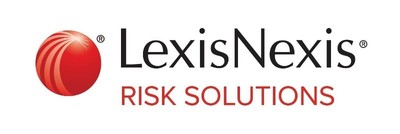The LexisNexis Risk Solutions Cybercrime Report Reveals New Opportunities and Risks for the U.S. and Canada in Digital Channels During Global Pandemic
LexisNexis Risk Solutions released its biannual Cybercrime Report for January to June 2020, noting significant changes due to the COVID-19 pandemic. While overall global attack volumes declined, transaction volumes rose by 37% to over 22.5 billion, with 66% from mobile devices. The U.S. saw a 33% decrease in human-initiated attacks but remains a hub for automated bot attacks, impacting mainly financial services and media industries. The report highlights a networked fraud expediting $27.9 million in losses across several retailers, emphasizing the evolving cyber threat landscape.
- 37% growth in transaction volume compared to 2019.
- 66% of transactions originated from mobile devices in H1 2020.
- 33% decline in human-initiated attack rates reported across Digital Identity Network.
- U.S. contributed highest volume of human-initiated and automated bot attacks globally.
- $27.9 million exposed to fraud across multiple online retailers.
- Media industry recorded growth in cyberattacks, countering overall decline.
Insights
Analyzing...
ATLANTA, Sept. 15, 2020 /PRNewswire/ -- LexisNexis® Risk Solutions today released its biannual Cybercrime Report, which tracks global cybercrime activity from January through June 2020. The report dives deep into how the COVID-19 pandemic has impacted the global digital economy, regional economies, industries, businesses and consumer behavior. The period has seen strong transaction volume growth compared to 2019 but an overall decline in global attack volume. This is likely linked to growth in genuine customer activity due to changing consumer habits.
The LexisNexis Risk Solutions Cybercrime Report analyzes data from more than 22.5 billion transactions processed by the LexisNexis® Digital Identity Network®, a
The United States (U.S.) and Canada encountered lower overall attack rates in comparison to other global regions from January through June 2020. This is true across both desktop and mobile browser channels. The U.S. does contribute the highest volume of human-initiated and automated bot attacks globally. There are also pockets of attack growth across specific industries and use cases. These include upticks in attack rates targeting all use cases in the media industry, as well as financial services new account creations.
There is a clear pattern of networked fraud recorded across the region, highlighted by large, interconnected e-commerce fraud networks in the U.S. This network saw at least
Additional Key Findings from the LexisNexis Risk Solutions Cybercrime Report:
- Decline in Attack Rate – The overall human-initiated attack rate across the Digital Identity Network fell through the first half of 2020, showing a
33% decline year over year. The breakdown by sector shows a23% decline in financial services and a55% decline in e-commerce attack rates.
Latin America experienced the highest attack rates of all regions globally and realized consistent growth in attack rates from March to June 2020. The attack patterns in U.S., Canada and EMEA had less volatility and fewer spikes in attack rates during the six-month period observed. - Attack Vector Global View - Media is the only industry that recorded an overall year over year growth in human-initiated cyberattacks. The Digital Identity Network recorded the
3% increase solely across mobile browser transactions
Globally, automated bots remain a key attack vector in the Digital Identity Network. Financial services organizations experienced a surge in automated bot attacks and continue to experience more bot attacks than any other industry. - Across the Customer Journey - New account creations see attacks at a higher rate than any other transaction type in the digital customer journey. However, the largest volume of attacks targeted online payment transactions. Login transactions have seen the biggest drop in attack rate in comparison to other use cases.
Analysis across new customer touchpoints in the online journey is included in this report for the first time, providing additional context on key points of risk such as money transfers and password resets. - During COVID-19 - All industries have felt the impact of COVID-19. There are clear peaks and troughs in transaction volumes coinciding with global lockdown periods. Financial services organizations realized a growth in new-to-digital banking users, a changing geographical footprint from previously well-traveled consumers and a reduction in the number of devices used per customer. There have also been several attacks targeting banks offering COVID-19-related loans.
E-commerce merchants have seen an increase in digital payments and several other key attack typologies that coincide with the lockdown period. These included account takeover attacks using identity spoofing and more first-party chargeback fraud.
"This is the first LexisNexis Risk Solutions Cybercrime Report to include data on the new reality of conducting business during a pandemic," said Rebekah Moody, director of fraud and identity at LexisNexis Risk Solutions. "The move to digital, for both businesses and consumers, has been significant. Yet with this change comes opportunity for exploitation. Fraudsters look for easy targets: whether government support packages, new lines of credit or media companies with fewer barriers to entry. We need to ensure that all consumers, especially those who might be new to digital, are protected. Businesses must arm themselves with a layered defense that can detect the full spectrum of possible attacks and is future-proofed against evolving threats."
"In our recent True Cost of Fraud report, which surveyed retail and e-commerce merchants, respondents reported an overall increase in fraud attempts and confirmed fraud. This is contrary to what the Digital Identity Network identified, with a
Download a copy of the LexisNexis Risk Solutions Cybercrime Report, January through June 2020. Join Rebekah Moody, director of fraud and identity at LexisNexis Risk Solutions, for an overview of the latest Cybercrime Report on Tuesday, September 15 at 10:00am ET.
About LexisNexis Risk Solutions
LexisNexis® Risk Solutions harnesses the power of data and advanced analytics to provide insights that help businesses and governmental entities reduce risk and improve decisions to benefit people around the globe. We provide data and technology solutions for a wide range of industries including insurance, financial services, healthcare and government. Headquartered in metro Atlanta, Georgia, we have offices throughout the world and are part of RELX (LSE: REL/NYSE: RELX), a global provider of information-based analytics and decision tools for professional and business customers across industries. For more information, please visit www.risk.lexisnexis.com and www.relx.com.
Media Contact:
Marcy Theobald
678.694.6681
Marcy.Theobald@lexisnexisrisk.com
![]() View original content to download multimedia:http://www.prnewswire.com/news-releases/the-lexisnexis-risk-solutions-cybercrime-report-reveals-new-opportunities-and-risks-for-the-us-and-canada-in-digital-channels-during-global-pandemic-301130288.html
View original content to download multimedia:http://www.prnewswire.com/news-releases/the-lexisnexis-risk-solutions-cybercrime-report-reveals-new-opportunities-and-risks-for-the-us-and-canada-in-digital-channels-during-global-pandemic-301130288.html
SOURCE LexisNexis Risk Solutions








